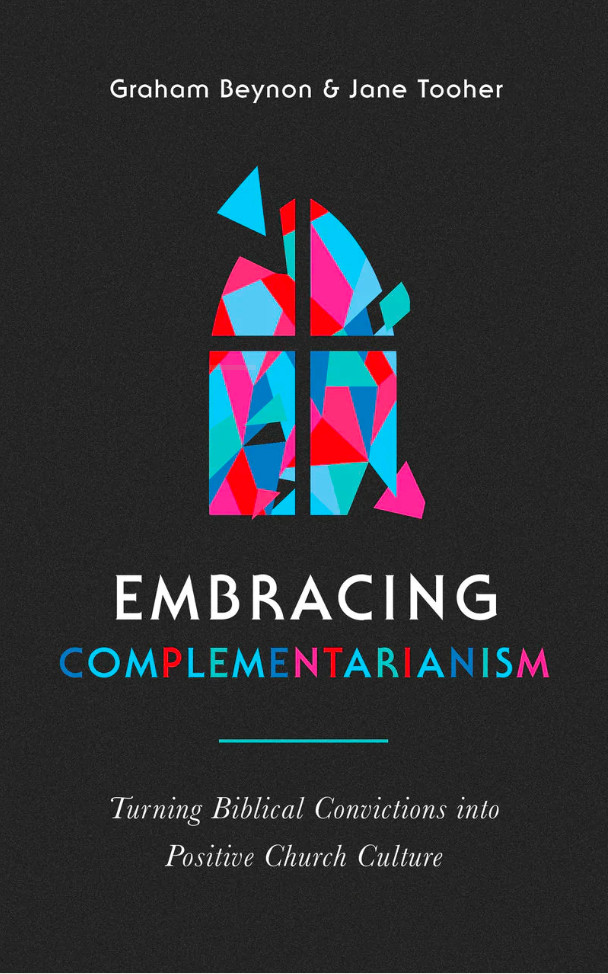The arrival of a new book “Embracing Complementarianism: Turning Biblical Convictions into Positive Church Culture” by Jane Tooher director of Moore College’s Priscilla and Aquila Centre and Graham Beynon from Oak Hill, a London college with a similar theological stance, leads to the intriguing question of whether this book brings a new slant to the controversial topic.
Complementarianism, to use a Beynon/Tooher definition “simply put.. is the belief that God made men and women equal and distinctive: equal in value and dignity, and distinctive in certain responsibilities and roles.”
Here, rather than re-do the debate over complementarianism and its alleged opposite egalitarianism, the focus will be on whether “Embracing Complementarianism” offers something equal to earlier texts or something distinctive in its treatment.
One critic of complementarianism, Michael Bird from Ridley Melbourne has observed “I see this book as a deliberate attempt by Aussie complementarians to disassociate themselves from the Grudem/Piper brand of complementarianism”
It is telling then that the lengthy list of endorsements at the start of this book are mostly UK and Australian, just like the authors, from Archbishop of Sydney Kanishka Raffel to John Stevens the national director of the UK version of the Fellowship of Independent Evangelical Churches.
Ever since Wayne Grudem and John Piper produced the urtext of modern complementarianism “Recovering Biblical Manhood and Womanhood” in 1991, the movement has had a North American flavouring. That book begins with Piper’s recall of his Greenville, South Carolina boyhood, which to this writer has cast a nostalgia for 1950s America over their theology.
Grudem was a proponent of “eternal functional subordination”, that sought to link a view of relations within the Trinity to the discussions about men and women. More cautious complementarians – as well as egalitarians – have been critical of the way that debate was handled,
“Embracing” is too gentle a book to refer directly to these past controversies. Its aim is to present Complementarianism as a positive, with positive outcomes in the church.
But Beynon/Tooher do criticise the tendency of earlier writing to focus on what women should not do, or defensiveness about complementarianism. “Much talk around complementarianism can be negative in tone, only really emphasising what women cannot do.” They also acknowledge there are now different strands to complementarianism.
For example, while training at Moore College, Sydney Anglican ministers who have wives working to support the family, even for a time, fail some North American tests of complementarianism – of the sterner stream that might title a book ‘Embracing Patriachy”

Beynon/Tooher make it clear they accept some part of feminist critiques of society. Drawing a distinction between “equity feminism” focused on injustice and “gender feminism” which they say aims at eliminating difference. (Perhaps oddly only identifying the second as Marxist in origin, and ignoring the Christian contribution to first-wave feminism).
It is clear that a more subtle approach to feminism is put forward in Embracing than appears in earlier complementarian writing that demonised the whole feminist project. The complementarianism that wants women to stay at home is not part of this book.
Similarly Embracing is clear that male and female traits overlap in the general population.
But Embracing even sees a reluctance to recognise some differences between men and women as understandable “Given the precedent set by much of human history, we should sympathise with this instinct; men do not have a good track record on this score. They have too easily thought themselves better, been dominant, and made sure that they have had more fun.”
Embracing acknowledges for example that unconscious bias exists in the workplace. Tooher recounts how it operates in the church. “Each year at the theological college where I (Jane) work, we go on a week-long mission.
“The students are divided into small groups which are each led by a male and female co-chaplain. These mission teams go to various churches, across different denominations, within Australia and overseas. Yet on several of the missions where I have co-lead, the pastor of the host church has spoken about the mission team purely as if it were led by the male co-chaplain. So, for instance, when one pastor thanked the team for coming, he thanked my co-chaplain and said nothing to me.”
The stricter sort of complementarian might see that as acknowledging headship.
In a later chapter, Embracing is clear that sexism exists and needs to be tacked in church and society within a context of “humility, respect, generosity and forgiveness.”
Embracing is clear that there is tension between complementarians, and cites the debate between those who see only a restriction on some roles such as preaching (such as Aimee Byrd) and those (like John Piper) who in adopting a more pervasive societal view of headship seems to want to keep women from being police officers. Of the Piper group, Embracing says “The weakness of this group is that they seem to make some generalised statements about gender that the Bible doesn’t.”
The move away from forms of complementarianism that seem to baptise nostalgia is clear in Embracing when the authors state “God doesn’t give any gender-specific commands in the Bible to do with personality type, interests, or traits. Women are not told be gentle and nurturing or to like sewing, and men are not told to be directive and goal orientated or to like sport.”
They emphasise that “The overwhelming majority of commands in Scripture are directed to men and women equally. We are all told to be holy, loving, kind, gentle and humble. Men are told to be compassionate, just as much as women are (Colossians 3:12); and women are told to be strong just as much as men are (1 Corinthians 16:13). We’re all called to imitate Christ. As Michael Bird has observed, neither Jesus nor Paul ‘issue caveats that the imitation of Christ comes in pink and blue’”.
But Beynon/Tooher insist that as gendered beings our lives will be influenced in many cases by natural traits and roles – roles being still at the heart of a complementation view. But they argue that complementarian styles of church will happen largely organically, without a lot of the anxiety-laden list-making about roles.
They warn about stereotypes of the “strong” masculine man, or the woman as “home-maker” that some Christians lean toward.
“This is where churches need to be very careful: in not painting extra-biblical pictures of manhood and womanhood, either by design or by default. This is what can sometimes happen when the events at church invariably involve crafts and baking for the women, and big breakfasts and long walks for the men; or when illustrations in talks or services use caricatures of roles.”
However, gender differences can be both over-emphasised or under-emphasised in the Beynon/Tooher view.
Embracing adopts a new balance in complementarianism. Theological resources and training must be as available for women as for men. “For instance, take the principle that women should learn from Jesus just as much as men. But when setting up a theology reading group at a church, who is invited? What are the topics on the agenda at men’s and women’s groups? Are women’s conferences aimed at “lighter” areas or serious teaching? Who do we consider for deeper theological education?”
But as expected 1 Timothy 2:11-14, is a key verse used in Embracing to promote a complementarian view, that authoritative teaching in church is a male role. Embracing’s new balance, a kinder and gentler complementarianism that takes the “equal” part of “equal but different more seriously remains complementarian.
This new balance is reflected in a chapter on ministry. Embracing predictably supports male elders, and preachers but also a “multicoloured picture of ministry” suggesting that in some churches preaching is regarded as too special, with “encouraging, exhorting, comforting, rebuking, training, correcting, spurring on” less noted.
The “practical” chapters of the book allow for a range of complementarian positions, including women preaching sometimes. (They identify regular preaching as exercising an eldership function, but not all complementarians take this view.)
Graham Beynon gives the example of his eldership team consulting their wives to gain input from women. This obviously excludes single women from the congregation, so perhaps a rethink is in order.
But the authors also take some stances not always found in complementarian churches.
Embracing asserts women staff should have pay equity. “‘The worker deserves his wages’ (1 Timothy 5:18)—and that extends to female workers too.” They see women leading teams in areas of church life like evangelism or worship.
They also point out that “And, as for any staff member, if a person has issues with their immediate boss, there needs to be someone else they can bring issues to. This reform could benefit many churches. Who this person/people will be will vary depending on your governance structures. But what’s important is that each staff member is clear on who it is.”
This would be an advance in many churches whatever their views on gender.
Embracing Complementarianism needs to be read in the context of some US Christians adopting “Christian Nationalism” which includes – believe it or not – a desire to remove the voting franchise from women, on the basis that men head households, and the US Constitution began with a male franchise.
Against that backdrop, it is an obvious move for non-US complementarians to set their own course.
“Embracing Complementarianism: Turning Biblical Convictions into Positive Church Culture” is available at The Wandering Bookseller

